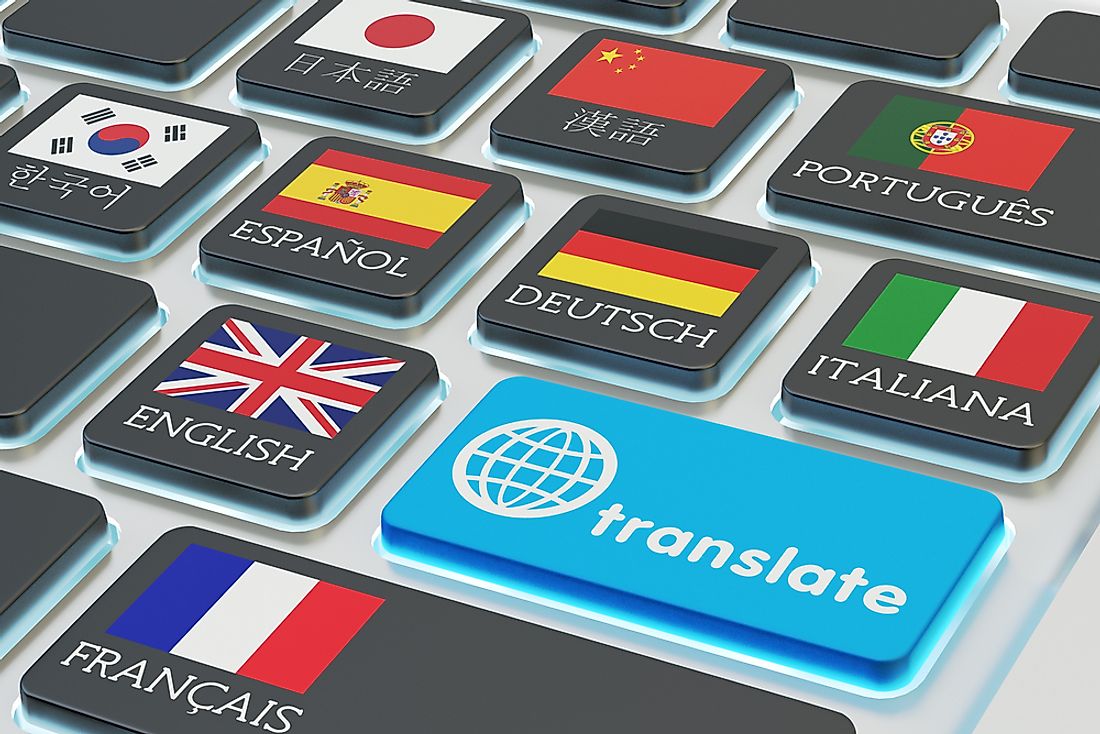Countries Where the Most Languages Are Spoken

There are about 7,000 languages that are spoken in the world, of these, fifty are considered global languages meaning that they are spoken from a global perspective. The remaining languages have a limited scope that can either be regional, national or ethnic. Some countries have several communities speaking diverse languages despite having a national language. The Linguistic Diversity Index measures the diversity of languages spoken in a country. Zero means only a single language, while one represents total diversity. Below are the most linguistically diverse countries.
The Most Linguistically Diverse Countries in the World
Papua New Guinea
Papua New Guinea has a diversity index of 0.990 and is the most linguistically diverse country on earth, as well as the world's most ethnically diverse. There are 852 languages in the country, three times the number of languages spoken in Europa. 840 are still spoken while 12 are extinct. Only one language is not indigenous to the country. The two principal languages are English, Tok Pisin although English is spoken by less than 2% of the population. Furthermore, 41 languages are considered as dying languages, 41 are institutional, and 336 are vigorous.
Vanuatu
Despite having a population of about 290,000, there are 113 spoken languages, resulting in a diversity index of 0.972. Statistically, this sums up to an average of 2560 people per language. The literacy level stands at 84% meaning that a large number of people can speak English, French or both. The other official language is Bislama. There are two extinct languages in the country, 109 are indigenous, 31 are vigorous, while ten are considered dying languages.
Solomon Islands
Solomon Island is home to about 640, 000 people occupying an area of 11,000 sqm. However, 76 languages are spoken on the island of which 71 are indigenous. English is regarded as the national language although it is only spoken by less than five percent of the population. Pijin is the predominant language spoken by the urban population, and it is commonly used unofficially in classrooms although the government is promoting the use of English as the primary language in schools. Three languages are institutional, 27 are vigorous, and eight languages are dying.
Tanzania
The East African state of Tanzania is home to approximately 52 million people and 127 languages resulting in a diversity index of 0.965. English and Swahili are the predominant languages and are used in institutions. Swahili is the most used language and is considered the national language; the government plans to discontinue the use of English in schools as a measure to promote the use of Swahili that is spoken by more than 90% of the population. Swahili is also used in other East African countries particularly Kenya, Uganda, Rwanda, Burundi, DRC, part of Mozambique. Fifty-eight languages are vigorous while eight are dying.
Effects Of Language Diversification
A society with diverse languages means that it is exposed to a variety of culture and traditions. Despite having several languages, a national language is considered a unifying factor and is spoken as either the first or second language. However, some of these languages have proven to be more of a curse than a blessing; it resulted in the Rwandan genocide that left about 800,000 people dead when the Tutsi and the Hutu clashed although the country has only three languages.
The Most Linguistically Diverse Countries in the World
| Rank | Country | Linguistic Diversity Index (Source: UNESCO) |
|---|---|---|
| 1 | Papua New Guinea | 0.990 |
| 2 | Vanuatu | 0.972 |
| 3 | Solomon Islands | 0.965 |
| 4 | Tanzania | 0.965 |
| 5 | Central African Republic | 0.960 |
| 6 | Chad | 0.950 |
| 7 | Democratic Republic of the Congo | 0.948 |
| 8 | Cameroon | 0.942 |
| 9 | India | 0.930 |
| 10 | Mozambique | 0.929 |
| 11 | Uganda | 0.928 |
| 12 | Gabon | 0.919 |
| 13 | Cote d'Ivoire | 0.917 |
| 14 | Liberia | 0.912 |
| 15 | Angola | 0.901 |
| 16 | Kenya | 0.901 |
| 17 | Togo | 0.897 |
| 18 | Timor-Leste | 0.897 |
| 19 | Mali | 0.876 |
| 20 | Nigeria | 0.870 |
| 21 | South Africa | 0.869 |
| 22 | Zambia | 0.855 |
| 23 | Guinea-Bissau | 0.853 |
| 24 | Philippines | 0.849 |
| 25 | Bhutan | 0.846 |
| 26 | Indonesia | 0.846 |
| 27 | Ethiopia | 0.843 |
| 28 | Republic of the Congo | 0.820 |
| 29 | Sierra Leone | 0.817 |
| 30 | Namibia | 0.808 |











